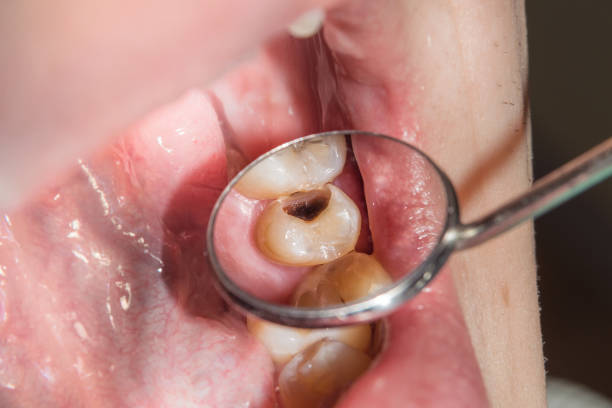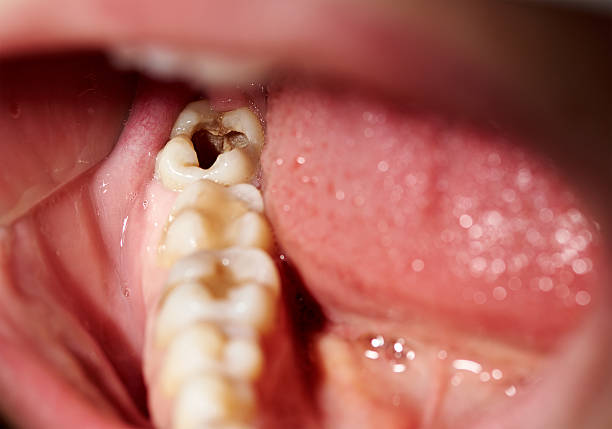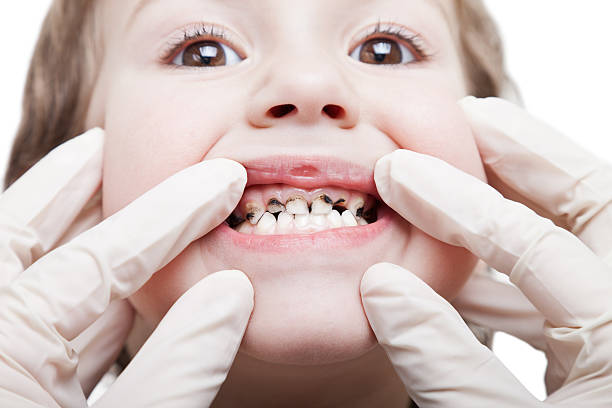What is tooth decay?
Tooth decay, also known as dental caries, is a common dental problem that occurs when bacteria in the mouth produce acids that attack the tooth enamel, causing a small hole or "cavity" to form. If left untreated, tooth decay can cause pain, infection, and even tooth loss. It is important to practice good oral hygiene by brushing and flossing regularly and visiting the dentist regularly to help prevent tooth decay.
Different types of tooth decay
There are several types of tooth decay that can occur:
Pit and fissure tooth decay: This type of decay typically occurs on the chewing surfaces of the back teeth (molars and premolars).
Smooth surface tooth decay: This type of decay typically occurs on the smooth surfaces of the teeth, between the teeth, and along the gumline.
Root surface tooth decay: This type of decay occurs on the roots of teeth that have been exposed due to receding gums.
Cavity: A cavity is a hole that develops in a tooth as a result of tooth decay. It can range in size from very small to very large.
Advanced tooth decay: This type of decay occurs when a cavity or tooth decay has progressed to the point where it has caused significant damage to the tooth. It may require more extensive treatment, such as a root canal or tooth extraction.
Causes of tooth decay
There are several factors that can contribute to tooth decay:
Poor oral hygiene: Failing to brush and floss regularly allows bacteria to build up on the teeth and form plaque, which can lead to tooth decay.
Diet: Consuming sugary and acidic foods and drinks can increase the risk of tooth decay, as these substances can erode the tooth enamel and create an environment in which bacteria can thrive.
Dry mouth: Saliva helps to neutralize the acids in the mouth and wash away food particles. A lack of saliva, or dry mouth, can increase the risk of tooth decay.
Certain medical conditions: Some medical conditions, such as acid reflux and diabetes, can increase the risk of tooth decay.
Certain medications: Some medications can reduce the production of saliva, which can increase the risk of tooth decay.
Age: Tooth decay is more common in older adults, as the tooth enamel becomes thinner with age and is more susceptible to damage.
Symptoms of tooth decay
The symptoms of tooth decay can vary depending on the severity of the decay and the location of the affected tooth. Common symptoms of tooth decay include:
Toothache: Pain in the tooth that may be sharp or dull, and may be worse when eating or drinking.
Sensitivity to hot and cold: Sensitivity to hot and cold foods and drinks may be a sign of tooth decay, as the bacteria can cause the tooth to become more sensitive to temperature changes.
Visible holes or pits in the teeth: Tooth decay can cause small holes or pits to form in the teeth, which may be visible to the naked eye.
Discolored teeth: Tooth decay can cause the teeth to become discolored or yellowed.
Bad breath: Bad breath (halitosis) can be a sign of tooth decay, as bacteria in the mouth can produce foul-smelling odors.
Swelling and tenderness in the gums: In some cases, tooth decay can cause swelling and tenderness in the gums.
If you are experiencing any of these symptoms, it is important to visit your dentist as soon as possible to diagnose and treat the problem.
How to prevent tooth decay
There are several steps you can take to prevent tooth decay:
Brush your teeth twice a day with a fluoride toothpaste: Brushing your teeth removes plaque, a film of bacteria that forms on your teeth and can cause tooth decay. Fluoride toothpaste can help to strengthen the tooth enamel, making it more resistant to decay.
Floss daily: Flossing removes plaque and food particles from between your teeth, where a toothbrush cannot reach.
Use mouthwash: Mouthwash can help to kill bacteria and freshen your breath.
Limit sugary and acidic foods and drinks: Consuming sugary and acidic foods and drinks can increase the risk of tooth decay, as these substances can erode the tooth enamel and create an environment in which bacteria can thrive.
Drink plenty of water: Water helps to wash away food particles and neutralize the acids in the mouth, which can help to prevent tooth decay.
Visit your dentist regularly: Regular dental checkups and cleanings can help to prevent tooth decay by removing plaque and tartar (hardened plaque) from your teeth.
Use fluoride treatments: Fluoride treatments can help to strengthen the tooth enamel, making it more resistant to decay.
By following these steps, you can help to keep your teeth healthy and prevent tooth decay.
Treatments for tooth decay
There are several treatments for tooth decay that your dentist may recommend, depending on the severity of the decay:
Fillings: If the decay is small and confined to a small area of the tooth, your dentist may recommend a filling. A filling is a material (such as amalgam, composite, or gold) that is used to fill the hole or cavity caused by the decay.
Crowns: If the decay is more extensive and affects a larger portion of the tooth, your dentist may recommend a crown. A crown is a cap that covers the entire tooth, protecting it from further decay.
Root canals: If the decay has progressed to the point where it has reached the pulp (the inner part of the tooth that contains nerves and blood vessels), your dentist may recommend a root canal. A root canal is a procedure in which the infected pulp is removed and the inside of the tooth is cleaned and sealed.
Extractions: In some cases, tooth decay may be so advanced that the tooth cannot be saved and must be extracted.
It is important to treat tooth decay as soon as possible to prevent the problem from getting worse and to protect the health of your teeth. Your dentist will be able to recommend the best treatment option for you based on the severity of the decay.




Post a Comment